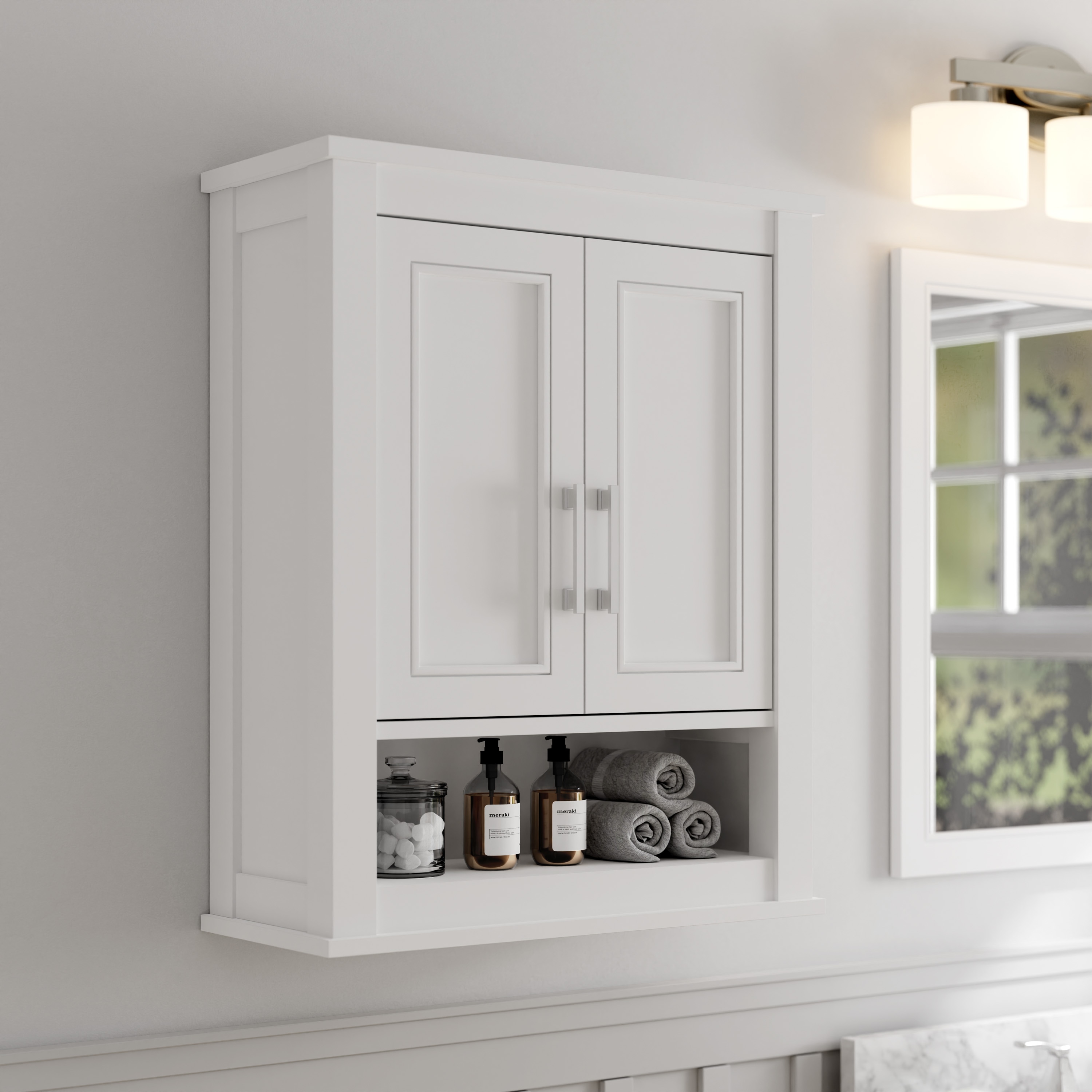Installing and Maintaining a Corner Bathroom Cabinet: Lowes Corner Bathroom Cabinet

Installing a corner bathroom cabinet can be a great way to maximize space in your bathroom and add some extra storage. However, it’s important to make sure that you install it properly to ensure that it’s stable and secure. This guide will provide you with a step-by-step process for installing and maintaining your new corner bathroom cabinet.
Installing a Corner Bathroom Cabinet
Installing a corner bathroom cabinet is a simple process that can be done by most homeowners. You will need a few basic tools and materials, and you should be able to complete the installation in a few hours.
- Tools and Materials:
- Corner bathroom cabinet
- Stud finder
- Level
- Tape measure
- Pencil
- Drill
- Screwdriver
- Safety glasses
- Work gloves
- Wall anchors (if necessary)
- Screws
- Step 1: Choose the Location
- Choose a location for your cabinet that is easily accessible and that will not obstruct any plumbing or electrical fixtures.
- Ensure the location is suitable for the cabinet’s dimensions, and consider the surrounding fixtures and layout.
- Measure the area where you want to install the cabinet and mark the desired location on the wall using a pencil.
- Step 2: Find the Studs
- Use a stud finder to locate the studs in the wall.
- Mark the location of the studs on the wall using a pencil.
- If you’re installing the cabinet on drywall, you’ll need to use wall anchors to secure it.
- Step 3: Attach the Cabinet to the Wall
- Position the cabinet in the desired location and use a level to ensure that it is straight and level.
- If necessary, use shims to adjust the cabinet’s position until it is perfectly level.
- Pre-drill holes for the screws to avoid splitting the cabinet.
- Use screws to attach the cabinet to the wall.
- If you’re using wall anchors, insert them into the pre-drilled holes and then screw the cabinet to the wall.
- Step 4: Install the Cabinet Doors and Hardware
- If the cabinet came with doors, install them according to the manufacturer’s instructions.
- Install any other hardware, such as shelves, drawers, or knobs.
- Adjust the doors and hardware to ensure they function properly.
Ensuring Proper Alignment and Stability
- Leveling the Cabinet:
- Use a level to ensure that the cabinet is perfectly straight and level before attaching it to the wall.
- Use shims to adjust the cabinet’s position until it is perfectly level.
- This will help to prevent the cabinet from tilting or wobbling over time.
- Securing the Cabinet:
- Use screws that are long enough to penetrate the wall studs for maximum stability.
- If you’re installing the cabinet on drywall, use wall anchors to secure it.
- Wall anchors provide a stronger hold and help to prevent the cabinet from pulling away from the wall.
- Supporting the Cabinet:
- Consider adding additional support to the cabinet, especially if it is heavy or if you plan to store heavy items in it.
- You can use brackets or shelf supports to provide extra support.
Cleaning and Maintaining a Corner Bathroom Cabinet
- Regular Cleaning:
- Clean the cabinet regularly with a damp cloth and mild soap.
- Avoid using harsh chemicals or abrasive cleaners, as they can damage the finish of the cabinet.
- Drying the Cabinet:
- Dry the cabinet thoroughly after cleaning to prevent mildew and mold growth.
- Use a soft cloth to dry the cabinet, and make sure to get into all of the nooks and crannies.
- Protecting the Cabinet:
- Apply a sealant or wax to the cabinet to protect it from moisture and damage.
- This will help to keep the cabinet looking its best for years to come.
Troubleshooting Common Issues, Lowes corner bathroom cabinet
- Cabinet is Tilting or Wobbling:
- Check to make sure that the cabinet is properly leveled.
- If it is not level, use shims to adjust the cabinet’s position until it is level.
- Also, check to make sure that the screws are securely fastened to the wall.
- Cabinet is Pulling Away from the Wall:
- If the cabinet is pulling away from the wall, it may be because the screws are not long enough to penetrate the wall studs.
- Use longer screws to secure the cabinet to the wall.
- If the cabinet is installed on drywall, use wall anchors to secure it.
- Cabinet Doors are Not Closing Properly:
- Check to make sure that the hinges are properly aligned and that the screws are securely fastened.
- If the hinges are loose, tighten the screws.
- If the hinges are misaligned, adjust them until the doors close properly.
- Cabinet is Damaged:
- If the cabinet is damaged, you may need to repair it or replace it.
- If the damage is minor, you may be able to repair it yourself.
- If the damage is more extensive, you may need to contact a professional.
